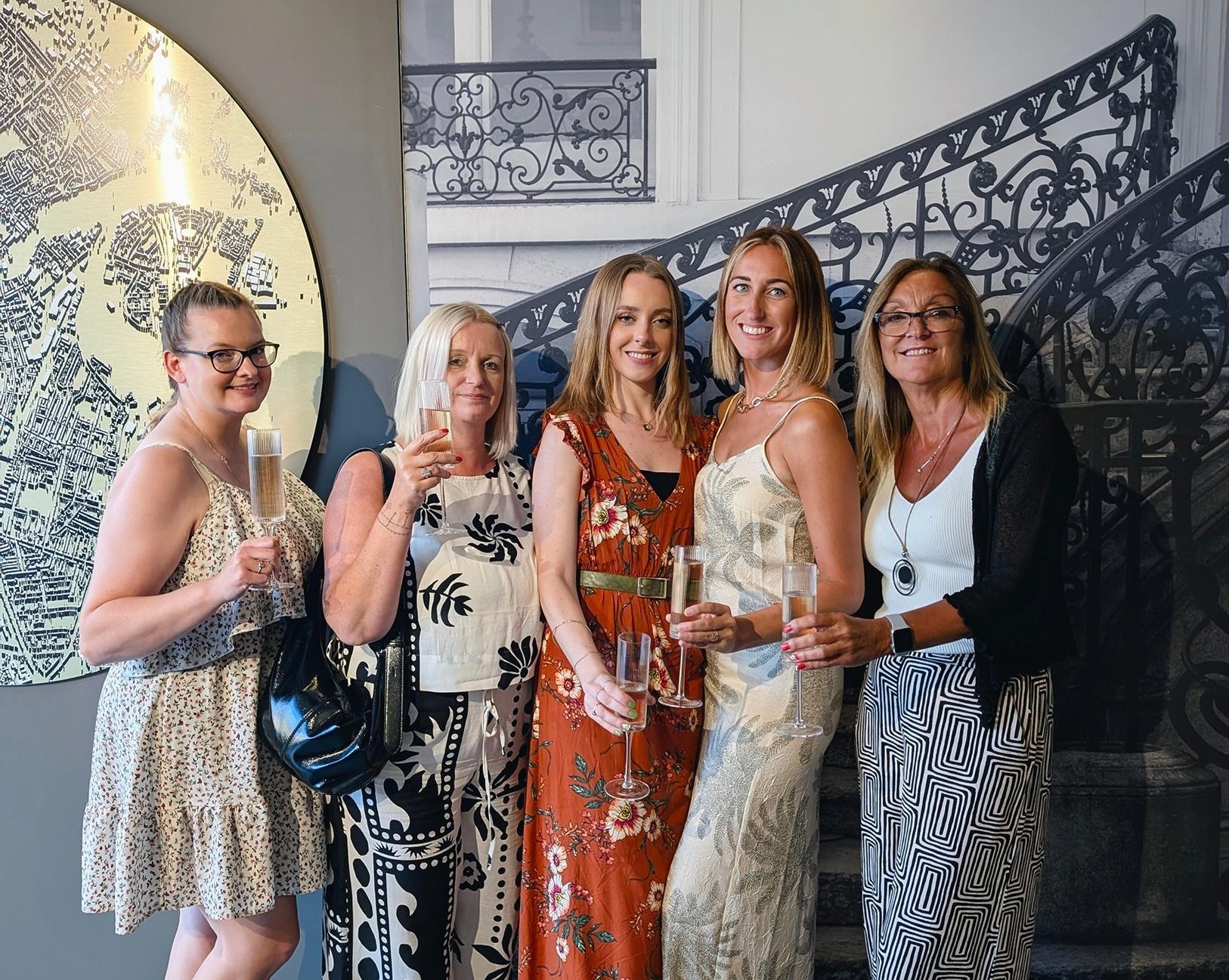
On 3rd July Nicholas Anthony’s Cambridge studio was alight with inspiration and intrigue as poetry filled the air at our summer soirée, celebrating the harmony of art and design, in partnership with Byard Art Gallery.
‘Echoing verses of a moment’ was the title of a carefully curated evening of creativity, conversation, champagne and canapés – an opportunity for guests to explore the studio and the latest ideas from our designers, as well as engage with the works of local artists all in the heart of historic Cambridge.
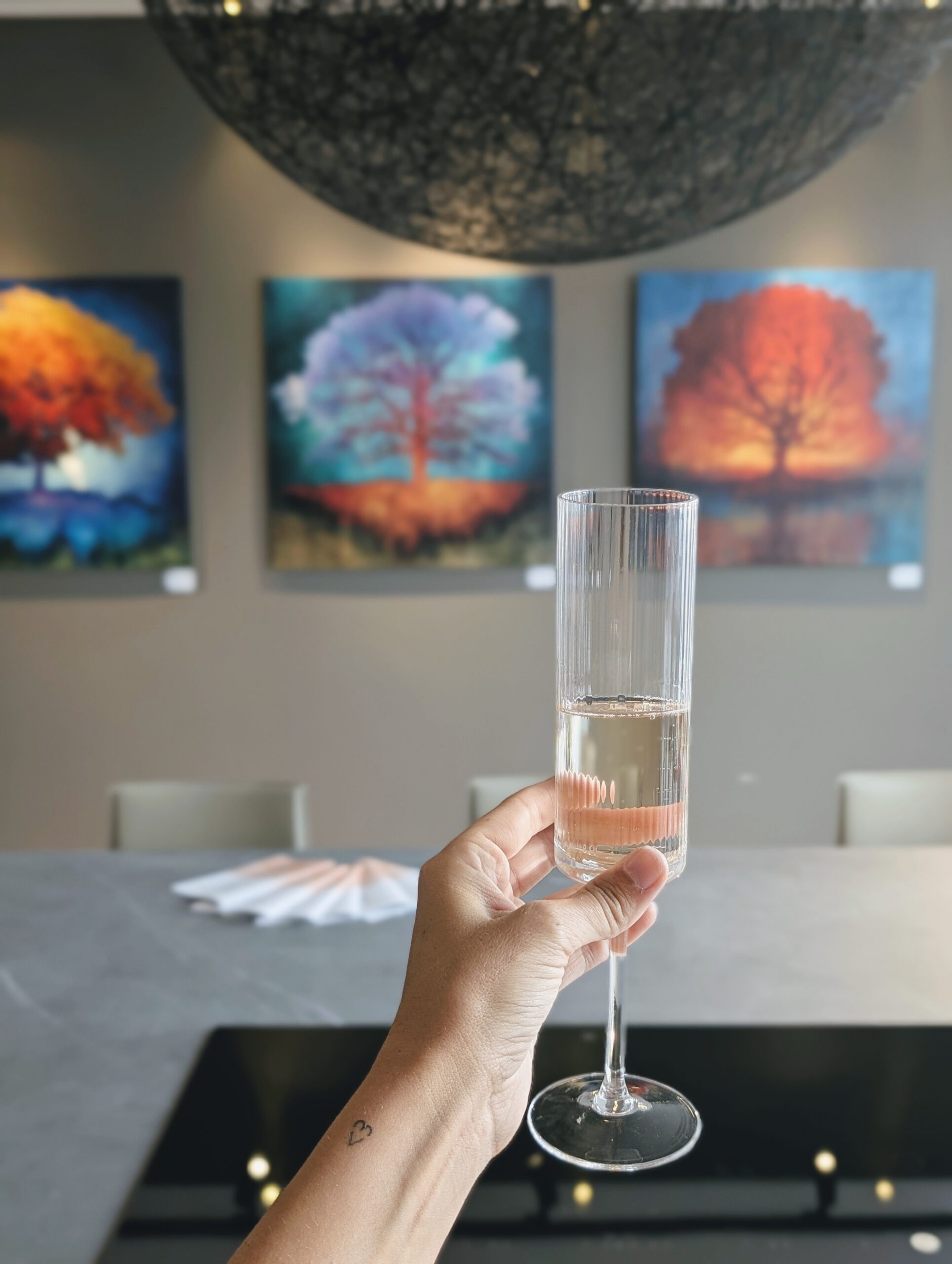
The occasion was sponsored by Siemens and Spiral Cellars, and over the course of the evening, guests had the chance to descend into an underground cellar by Spiral Cellars, currently on display in the studio. Here they could select their own limited-edition bottle of wine, crafted exclusively to commemorate the event.
The power of art
At Nicholas Anthony we are ardent advocates of the power of art in the home – a defining feature that makes a space more than the sum of its parts, speaking to the soul, and echoing parts of ourselves that otherwise go unexpressed.
With that in mind, the name of the evening, ‘Echoing verses of a moment’, was inspired by art’s ability to distil time. Nicholas Anthony’s Design Director, Niko Rasides, explains:
“We wanted to consider the idea of memories, which become fragments, almost like a ripple across the water, playing on the mind. Art has a magical way of taking us back to these moments from our past, giving us access to them, soothing us, helping us to express ourselves, and creating space for contemplation. When we see something that reminds us of a memory, it makes us feel something, reflecting our belief that each artwork is like a verse – part of a wider whole.”
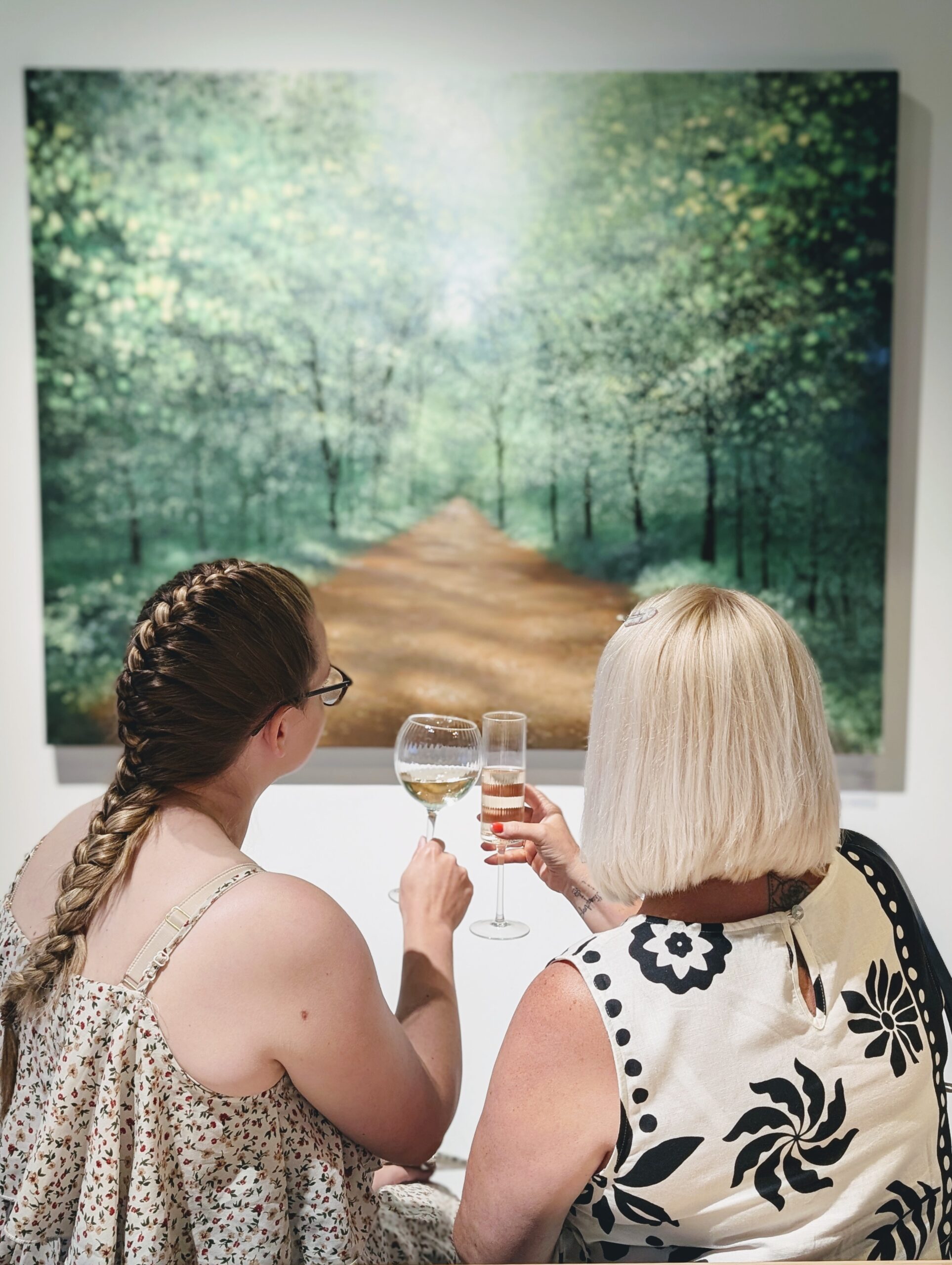
Artists in residence
Showcasing a combination of 21 unique pieces including ceramics, sculptures and paintings, featured artists ranged from Chris Wood, known for her work with glass and light, to Mark Munroe Preston with his luminous paintings on brushed aluminium, painter Anita Klein, and more. Amongst them, guests delighted in discovering the works of the following:
Working with light and glass: Chris Wood
Born in Newcastle in 1954, Chris Wood now lives and works in Cambridgeshire, using glass as her canvas and light as her medium. Using one to manipulate the other, with subtle interventions carefully placed in the optical plane, she harnesses patterns of light, which recall ephemeral glimpsed moments in the natural world. She is known for her signature light-responsive artworks and transformative installations, garnering global acclaim, culminating in the establishment of the Chris Wood Light Studio in 2015.
Blending photography and painting: Mark Munroe Preston
Mark’s work coalesces photography, painting and collage to create atmospheric pictures inspired by his experiences in nature. Beginning with images drawn from his expansive collection of original landscape photographs, he transforms them, revealing subtleties of colour, texture, light and form, while evoking the natural beauty and drama of the scenes, blurring the boundaries of what is traditionally considered photography and painting. His works are presented as limited edition prints on sheets of brushed aluminium, which gives each work a uniquely dynamic look, depth of colour and contemporary feel.
Cities of gold: Ewan David Eason
Eason’s Mappa Mundi prints portray a contemporary visualisation of modern cities in juxtaposition to their medieval namesake. They depict a bird’s eye view of some of the most iconic topographical surfaces on our planet in shimmering gold, but these works are not just an artist representation – they are also the result of a painstaking process undertaken to document the landscape, whilst sympathetically following the ethos and history of cartography. High levels of accuracy and dedication are used in the construction of these prints, emphasising their status as a method of art-as-documentation. The context of these works represents a snapshot of our ever-changing landscape that could potentially be completely re-written in as little as a decade.
Photorealism meets expressive art: Donald Macdonald
Donald Macdonald has been fascinated by photorealism since childhood, when he would sit for hours meticulously drawing images from encyclopaedias and copying his sibling’s school photographs in an attempt to capture their likeness. It was not until he studied painting at Gray’s School of Art that he truly discovered expressive art and began working loosely from memory. Exploring and pushing the boundaries of these contrasting methods of working has fuelled him ever since. He creates three-dimensional scenes using sketches and folded paper that he previously drew from memory, placing them in compositions and scenarios which are then painted. Macdonald uses this method to convey feelings and emotions, all while recreating and copying life’s events in some way.
Photorealism and painterly freedom: Tommy Carlsson
Born in Sweden in 1958, Tommy Carlsson went to the Orland Ever Art School, and now lives and works in Långasjö (småland) and Stockholm. Tommy’s artwork reflects his fascination with realism in northern European sixteenth and seventeenth-century art. For several years his painting has concentrated on the precise depiction of interactions between materials, pressure sources, light and shadow. The artist subtly marries photorealism with painterly texture and freedom, in the creation of these evocative works.
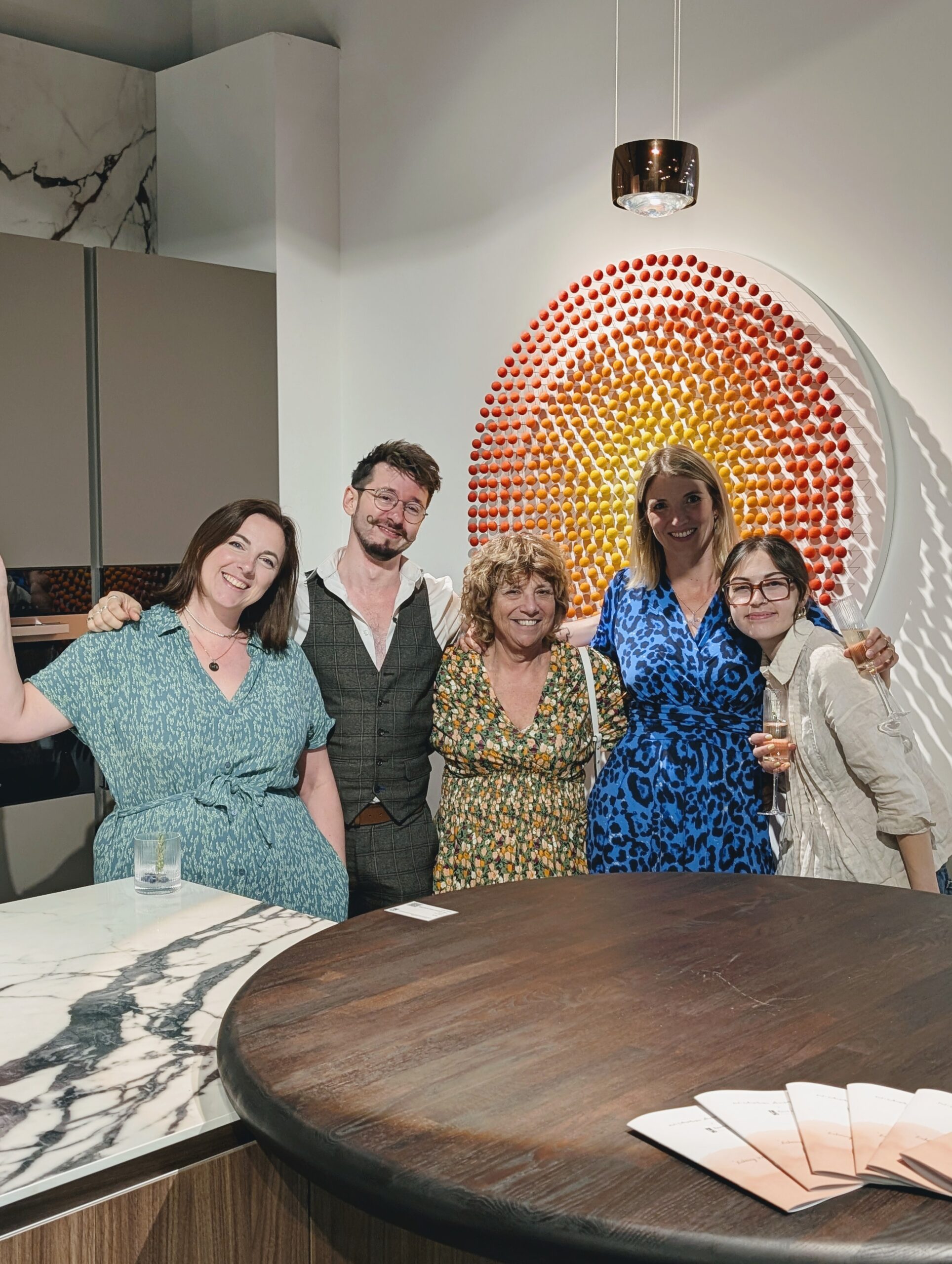
Painting by moments: Anita Klein
Now dividing her time between studios in Bermondsey, London and Italy, Anita Klein studied at Chelsea and the Slade schools of art in London, and from 2003 to 2006 was president of the Royal Society of Painter Printmakers. She has worked on many private and public collections in Europe, the USA and Australia, including the Arts Council of Great Britain, the British Museum and the British Library. She says that her art is for anyone who likes it – she is dedicated to enjoying the process, which she says keeps her sane. She sees her art as a way of celebrating her own life, especially small, ordinary moments and intimate relationships.
Colour and composition: Beckie Reed
Having graduated from Loughborough University in 2004, with a first in Fine Art Painting, Beckie Reed lives and paints in East Anglia. She is constantly inspired by her surroundings, and regularly goes out on long walks with her camera seeking inspiration. She typically works from these photographs, sometimes taking different images and merging them together. Her lively canvases are full of contrast, with each piece a mix of expressive washes and areas of highly concentrated detail. Her work is always evolving, and she remains inspired and excited by the discovery of new techniques. However, while she loves to experiment in medium and style, the formal elements of painting are especially important to her – colour and composition always remain key aspects.
An evocative palette: Antoine Josse
Antoine Josse’s paintings are known for their atmosphere, evocative colour and tumultuous skies. His paintings and sculptures express an irrepressible desire for lightness, escapism and the ability to dream the impossible. The presence of human beings immersed in these dream-like landscapes convey a unique charm in the artist’s work, where minuscule beings exist in a desolate and dangerous world where humour is balanced precariously with threat.
Mapping meaning: Elisabeth Lecourt
Elisabeth Lecourt is a multidisciplinary artist who lives and works in London. She creates meticulously folded clothing from geographical maps which, as a collection, she refers to as ‘Les robes geographiques’ (The geographical dresses). From a 14th-century map of Sir Francis Drake’s voyage to a diagram of rivers and mountains around the world, Elisabeth decided to work with maps because of their poetic charm, because even though they look specific, their information can sometimes be wrong. Calling them, “a portrait of people through their clothes, like a blue-print of their soul,” they are meaningful works of art that explore themes of sensitivity and vulnerability.
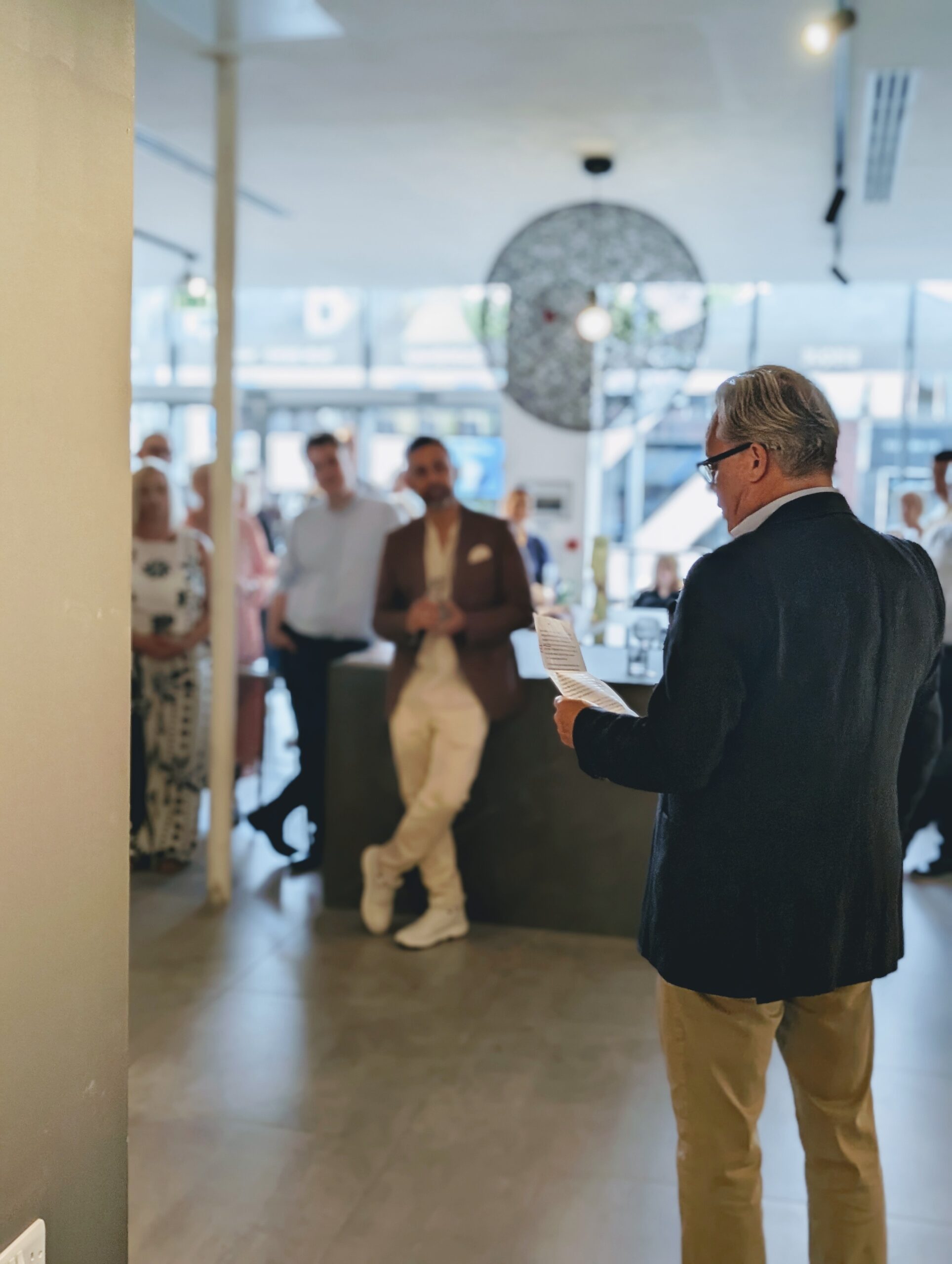
Textile installations: Waller and Hewett
Creative design partnership Ruth Waller and Lee Hewett explore their fascination for interior textile surfaces to produce impressive installations and bespoke pieces. The duo have combined their areas of expertise to create work that crosses the boundaries between art, design, and craft. Both studied at the Birmingham Institute of Art and Design, with Lee completing his Masters in Product Design in 2004, and Ruth obtaining her Masters in Textiles in 2000. They have featured work at the London Craft Fair at Somerset House and the Lakeside Arts Centre in Nottingham, and regularly exhibit their work at art fairs in London and abroad.
Figuratively speaking: Emma Jean Kemp
Emma’s work explores human experience, from how we feel to how we move, how we deal with everyday life and the choices we make. By designing bespoke structures, her figures playfully interact with their surroundings in a way that adds to their narrative, presenting us with a defining moment in their life. Much of Emma’s work manifests her enthusiasm for agility, acrobatics and dance, inspired by her love of Capoeira (a Brazilian martial art). Her more recent work celebrates the human body’s impressive range of motion. Emma hopes these pieces will connect with people’s inherent need to explore the world through movement.
Sculptural significance: Carolyn Tripp
Inspired by a Chinese bottle gifted to her as a child, each piece Carolyn makes assumes its own identity with the application of transferred decoration. Collected imagery and text tell stories from lives past and present, centring around the human condition from the significant to the trivial. Through tearing and cutting the storytelling becomes abstract. Visible fragments hint at the narrative creating new meanings. Borrowing from historic ceramic tradition, Carolyn’s process gives each piece a contemporary twist, where eclectic shapes and surfaces stand alone or work in harmony when grouped, capturing the gaze and allowing the viewer their interpretation. All her work is hand-thrown at Wimbledon Art Studios, where she creates shapes dictated by the feel of the porcelain clay.
Ceramic simplicity: Kate Reynolds
Having studied 3D Design at Brighton University, followed by a Master’s degree in Ceramics at Cardiff University, Kate Reynolds is a ceramic artist known for her sculptural work exploring the human head and figure. Her practice focuses on simplified, stylised forms that retain the essence and presence of humanity, using profile and outline to create pieces that are both direct and expressive. She works primarily with Raku-fired ceramics, incorporating poured crackle white and turquoise glazes. The unpredictable nature of the Raku process, including the striking blackening smoke, gives each piece a unique finish, lending her figures a distinct identity, character, and sometimes surprising contrasts.
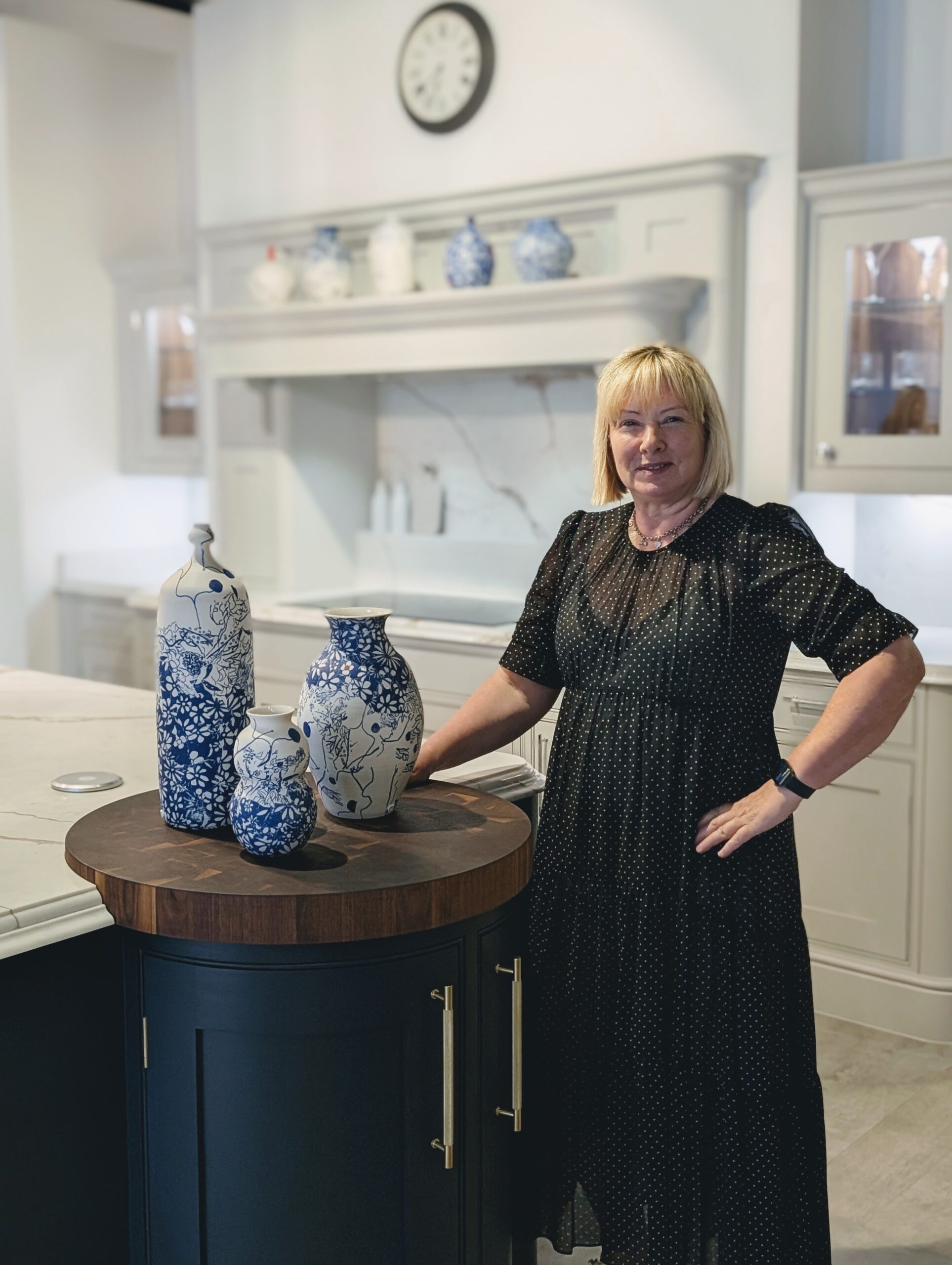
Multimedia minimalism: Anja Hessler
Anja Hessler is a German/British artist and designer who creates one-of-a-kind contemporary mobile sculptures and objects from precious and non-precious metals, acrylic and wood. Minimalism and design as art play a dominant role in Hessler’s practice, drawing inspiration from the Modernism movement and in particular the Bauhaus ethos and its emphasis on the integration of art, design and craftsmanship. She is captivated by the clean lines, symmetry, and spatial relationships found in architectural design. Hessler carefully considers the balance and proportions of her sculptures, orchestrating an intricate interplay of forms that evokes a sense of wonder, inviting the viewer into a realm where art, design, and the natural world coexist in harmonious unity.
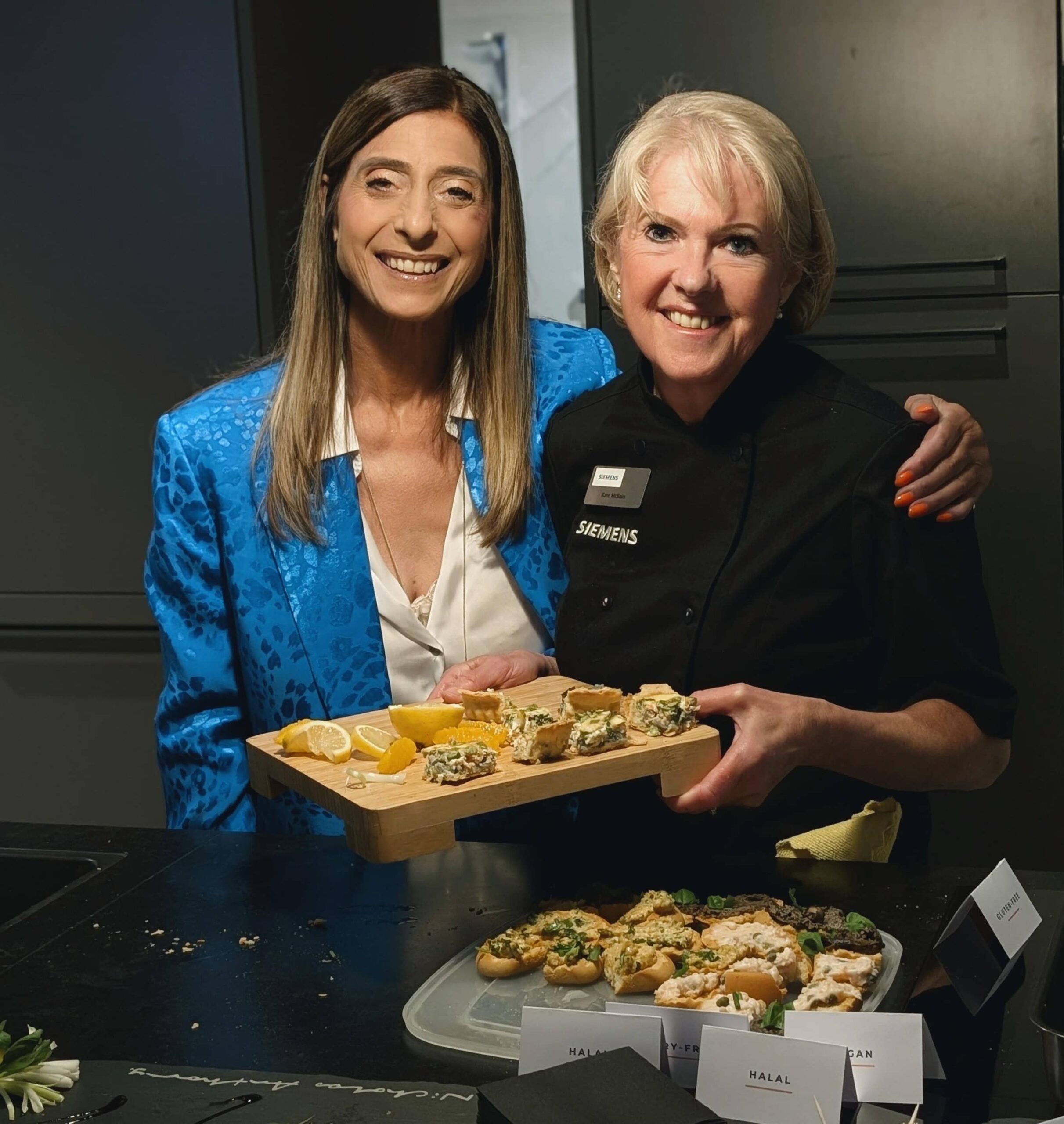
An inspiring evening
At Nicholas Anthony, we take enormous pride and joy in hosting private events, including celebrating local artists and showcasing how art can transform interior spaces. The evening was a triumph, and a fantastic opportunity to not only celebrate creativity, but in particular the talent that resides in Cambridgeshire.



